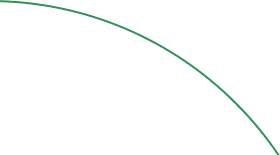Definition
The union of two sets includes all elements from both sets, without duplication. It is denoted by the symbol ∪. The union operation forms a set that contains all elements that are in set A, in set B, or in both.
Union of Sets is the fundamental operation that combines elements from multiple sets
into a comprehensive collection containing everything from all input sets. It represents the logical
"OR" operation in set theory, enabling the aggregation of data, combination of categories, and
formation of comprehensive groups from smaller collections.
🎯 What does this mean?
Union is the mathematical "gathering operation" that collects everything from multiple sets into one
comprehensive collection. Think of it as the "bring everyone together" command that combines separate
groups without losing anyone - like merging guest lists for a party, combining search results, or
creating a master database from multiple sources. It represents the logical "OR" - an element is in
the union if it's in at least one of the original sets.
\[ A \cup B \]
Union Symbol - All elements in A or B or both
\[ \bigcup \]
Big Union - Union of multiple or infinite sets
\[ x \in A \]
Element Membership - x belongs to set A
\[ \lor \]
Logical OR - At least one condition is true
\[ \emptyset \]
Empty Set - Identity element for union
\[ U \]
Universal Set - Dominating element for union
\[ A^c \]
Complement of A - Elements not in A
\[ A \cap B \]
Intersection - Elements common to both A and B
\[ |A \cup B| \]
Cardinality - Number of elements in union
\[ A \subseteq B \]
Subset Relation - All elements of A are in B
\[ A \sqcup B \]
Disjoint Union - Union when sets don't overlap
\[ \exists \]
Existential Quantifier - There exists at least one
🎯 Essential Insight: Union is the mathematical "collection aggregator" that brings together
all elements from multiple sets without duplication, representing the logical "OR" operation! 🎯
🚀 Real-World Applications
💾 Database Operations & Information Systems
Data Integration & Query Processing
SQL UNION operations, data merging, search result combination, and master data creation use union operations for comprehensive data aggregation
🔍 Search Engines & Information Retrieval
Query Expansion & Result Combination
Combining search results, OR queries, keyword expansion, and content aggregation rely on union operations for comprehensive information gathering
📊 Market Research & Business Intelligence
Customer Segmentation & Market Analysis
Combining customer segments, market categories, demographic groups, and business intelligence reporting use unions for comprehensive analysis
🏥 Healthcare & Medical Systems
Patient Records & Treatment Planning
Combining patient populations, treatment groups, symptom categories, and medical research data use union operations for comprehensive care planning
The Magic: Databases: Data combination → Comprehensive records, Search: Result aggregation → Complete information,
Business: Segment combination → Total market view, Healthcare: Population combination → Comprehensive care
Before calculating unions, visualize the comprehensive gathering of all elements:
Key Insight: Union is the mathematical "bring everyone together" operation that creates
the most comprehensive collection possible from multiple sets. Think of it as the "OR" logic that says
"include if it appears in any of the sets" - it's about maximum inclusion!
💡 Why this matters:
🔋 Real-World Power:
- Data Integration: Combine multiple datasets into comprehensive collections
- Information Gathering: Aggregate results from multiple sources
- Category Expansion: Create broader classifications from specific groups
- Resource Pooling: Combine resources for maximum availability
🧠 Mathematical Insight:
- Commutative and associative properties enable flexible ordering
- Inclusion-exclusion principle provides precise counting methods
- Distributive laws enable complex algebraic manipulations
🚀 Practice Strategy:
1
Apply the "OR" Logic 🎯
- Element is in union if it's in ANY of the sets
- Check: "Is x in A OR is x in B?"
- Key insight: Include everything, exclude nothing
2
Visualize with Venn Diagrams 🎨
- Draw overlapping circles for each set
- Shade entire area covered by any circle
- Union includes all shaded regions
3
Use Algebraic Properties ⚖️
- Commutative: A ∪ B = B ∪ A
- Associative: (A ∪ B) ∪ C = A ∪ (B ∪ C)
- Identity: A ∪ ∅ = A
- Absorption: A ∪ (A ∩ B) = A
4
Count with Inclusion-Exclusion 📊
- |A ∪ B| = |A| + |B| - |A ∩ B|
- Subtract overlaps to avoid double-counting
- Extend formula for multiple sets systematically
When you see union as the "comprehensive gatherer" that brings together everything from multiple sets,
set theory becomes a powerful tool for data integration, information aggregation, and complete collection building!
Memory Trick: "Union = Unify, No-exclusion, Include, Obtain, Neutralize-separation" - GATHER: Bring everything together,
OR: Logical OR operation, ALL: Include from any source
🔑 Key Properties of Union
⚖️
Commutative & Associative
A ∪ B = B ∪ A and (A ∪ B) ∪ C = A ∪ (B ∪ C)
Order and grouping don't affect result
📈
Monotonic Growth
A ⊆ A ∪ B and B ⊆ A ∪ B always
Union always contains original sets
🎯
Maximum Inclusion
Creates largest possible collection from inputs
Represents logical OR operation
📊
Inclusion-Exclusion
|A ∪ B| = |A| + |B| - |A ∩ B|
Precise counting with overlap correction
Universal Insight: Union is the mathematical embodiment of "comprehensive gathering" -
it creates the most inclusive collection possible by bringing together everything from multiple sources! 🎯
Basic Formula: A ∪ B = {x : x ∈ A or x ∈ B} for comprehensive collection
OR Logic: Element included if it appears in any of the sets
Size Formula: |A ∪ B| = |A| + |B| - |A ∩ B| (inclusion-exclusion)
Growth Property: Union always contains all original sets as subsets



